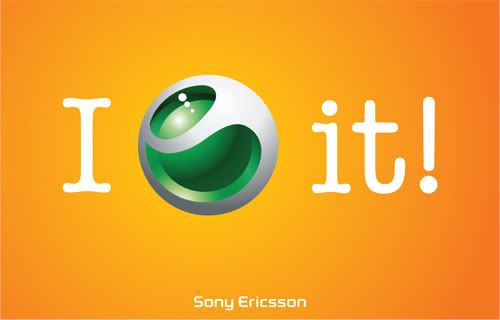Get your viewing clobber round this people:
Wednesday 28 November 2007
Thursday 22 November 2007
Simplifying Communication
Communication may have evolved in the past several thousand years, but new challenges constantly emerge. A key challenge is in IT. As I mentioned earlier, communication has evolved when faced with the internet and modern technology. But a whole subset of new words has sprung up - some user-created, and some created as a means of communicating about the new technology. People often find these terms confusing - even as a regular internet user, I often find myself looking things up. Could a device to help people be created? A dictionary? Some kind of translation tool for older folks or cave-dwellers who've never used the internet?
Friday 16 November 2007
Examples of written communication, and how it adapts to survive
Written communication is so prevalent these days you absorb thousands of words every day. But how has it evolved with the development of technology, and does it still have a place in the modern world?
Since Gutenberg's bible in 1450 revolutionised the reproduction of the written word, standards of grammar and letterform have decreased and increased. Words have become easier to read in some ways, and more difficult to read in others.
As printing developed, the letterforms and typefaces moved slowly away from the emulation of handwriting and into a style of their own. Serifs came and went, and came back again. Sans-serif fonts were developed. And then came the advent of the Biro, the Internet and mobile phones.
The biro has a lot to answer for. It was created by a newspaper editor in the 1940s as an alternative to his fountain pen which often tore up his notepaper and took a while to dry. László Bíró created the most popular pen in the world, the Biro, and handwriting standards plummetted. Because people had to make less effort writing, they took less care over it. Handwriting either became incredibly basic or very scruffy, with little standardisation. But thankfully the printed word was still around to ground the letterforms.
The internet has warped and twisted communication more than many would have thought possible - so much so that there is a entire argot of slang called 1337 (or Leet). Leetspeak originated on the internet forums of the 1980s where a 'leet' (or e-lite) user would be respected for his knowledge, and it was handy in getting round word filters. Nowadays, Leet can be seen all over the internet, and is used by nearly everyone in some form or other. Smilies and expresions such as 'LOL' (laugh out loud) are especially popular. Additionally, character substitution often occurs - for example - "l33t sP33k is U8er keWl 4nD eA5y wehn u 7hink 1t tHr0uGh."
Leet has migrated and evolved onto mobile phones, where the constraints of a very basic text input method, a small screen and a character limit forced texters to innovate. Common expressions include 'C U l8r' (for 'See you later').
It is interesting to consider whether these evolutions of language have any affect on formal writing. Certainly they do, but does formal writing have anything to fear? Obviously it would not be appropriate to write in l337-speak in an essay, but what's wrong with time-saving?
This brings me on to George Orwell's 1949 novel, 1984. Besides being an incredible work of dystopian literature, Orwell raises some relevant points. For example, the administration of the book's setting, Oceania, have created a language called 'Newspeak' which basically involves ripping words apart to increase efficiency. Is this a bad thing? Is the decrease in variety acceptable at the increase of speed and fluency?
Since Gutenberg's bible in 1450 revolutionised the reproduction of the written word, standards of grammar and letterform have decreased and increased. Words have become easier to read in some ways, and more difficult to read in others.
As printing developed, the letterforms and typefaces moved slowly away from the emulation of handwriting and into a style of their own. Serifs came and went, and came back again. Sans-serif fonts were developed. And then came the advent of the Biro, the Internet and mobile phones.
The biro has a lot to answer for. It was created by a newspaper editor in the 1940s as an alternative to his fountain pen which often tore up his notepaper and took a while to dry. László Bíró created the most popular pen in the world, the Biro, and handwriting standards plummetted. Because people had to make less effort writing, they took less care over it. Handwriting either became incredibly basic or very scruffy, with little standardisation. But thankfully the printed word was still around to ground the letterforms.
The internet has warped and twisted communication more than many would have thought possible - so much so that there is a entire argot of slang called 1337 (or Leet). Leetspeak originated on the internet forums of the 1980s where a 'leet' (or e-lite) user would be respected for his knowledge, and it was handy in getting round word filters. Nowadays, Leet can be seen all over the internet, and is used by nearly everyone in some form or other. Smilies and expresions such as 'LOL' (laugh out loud) are especially popular. Additionally, character substitution often occurs - for example - "l33t sP33k is U8er keWl 4nD eA5y wehn u 7hink 1t tHr0uGh."
Leet has migrated and evolved onto mobile phones, where the constraints of a very basic text input method, a small screen and a character limit forced texters to innovate. Common expressions include 'C U l8r' (for 'See you later').
It is interesting to consider whether these evolutions of language have any affect on formal writing. Certainly they do, but does formal writing have anything to fear? Obviously it would not be appropriate to write in l337-speak in an essay, but what's wrong with time-saving?
This brings me on to George Orwell's 1949 novel, 1984. Besides being an incredible work of dystopian literature, Orwell raises some relevant points. For example, the administration of the book's setting, Oceania, have created a language called 'Newspeak' which basically involves ripping words apart to increase efficiency. Is this a bad thing? Is the decrease in variety acceptable at the increase of speed and fluency?
Thursday 15 November 2007
Written Communication
What exactly is written communication? To define this I must define communication.
Communication is the process whereby information is transmitted using a common set of rules. There are various ways this can be accomplished, and the simplest method is speech. But obviously speech isn't always practical, and that's why written communication exists. Written communication is all around us - on signs, product packaging and the like. And it has adapted and evolved to represent the needs of the society that uses it.
Written communication has its origins in cave paintings - some forty-thousand years old. The purpose of cave paintings is not known, but it is speculated that they had religious/spiritual significance, and were used to record events. Until six thousand years ago, man had relatively little need for written communication, but this changed as trade and finance developed. There was simply too much information for all of it to be stored in the memory, so people began to record it in a permanent form. The mesopotamians had a system of clay tokens to representing commodities, and by the fourth millenium BC this had evolved into using a stylus to carve numbers into soft clay. The mesopotamiams then started carving pictures to represent what was being counted, and the development of written language began.
There are broadly four methods of writing; Logographies, Syllabaries, Alphabets and Featural scripts. Logographies represent words with single symbols that look like what they are representing. Chinese is an example of this. A Syllabary language is one that represents syllables with single characters - Japanese for example. An Alphabet language uses letters to form the basis of words - for example, English. And lastly, a Featural language uses symbols to denote certain sounds.
The world's oldest known alphabet was developed by the Egyptians in 2000BC from their hieroglyphic system, and it spread to Canaan and eventually the rest of the world. As it spread, people realised the importance of a system of language that was easily constructed by everyone and could be written with the most basic of tools. Written language continued to develop as technology improved. Letters and words were carved into clay and wood, and then into forms of paper. The invention of printing in the mid 1400s by Johannes Gutenberg revolutionised the written word even more. Letters became more standardised, and the idea of different typefaces emerged.
Communication is the process whereby information is transmitted using a common set of rules. There are various ways this can be accomplished, and the simplest method is speech. But obviously speech isn't always practical, and that's why written communication exists. Written communication is all around us - on signs, product packaging and the like. And it has adapted and evolved to represent the needs of the society that uses it.
Written communication has its origins in cave paintings - some forty-thousand years old. The purpose of cave paintings is not known, but it is speculated that they had religious/spiritual significance, and were used to record events. Until six thousand years ago, man had relatively little need for written communication, but this changed as trade and finance developed. There was simply too much information for all of it to be stored in the memory, so people began to record it in a permanent form. The mesopotamians had a system of clay tokens to representing commodities, and by the fourth millenium BC this had evolved into using a stylus to carve numbers into soft clay. The mesopotamiams then started carving pictures to represent what was being counted, and the development of written language began.
There are broadly four methods of writing; Logographies, Syllabaries, Alphabets and Featural scripts. Logographies represent words with single symbols that look like what they are representing. Chinese is an example of this. A Syllabary language is one that represents syllables with single characters - Japanese for example. An Alphabet language uses letters to form the basis of words - for example, English. And lastly, a Featural language uses symbols to denote certain sounds.
The world's oldest known alphabet was developed by the Egyptians in 2000BC from their hieroglyphic system, and it spread to Canaan and eventually the rest of the world. As it spread, people realised the importance of a system of language that was easily constructed by everyone and could be written with the most basic of tools. Written language continued to develop as technology improved. Letters and words were carved into clay and wood, and then into forms of paper. The invention of printing in the mid 1400s by Johannes Gutenberg revolutionised the written word even more. Letters became more standardised, and the idea of different typefaces emerged.
Sunday 11 November 2007
Sony Ericsson - I Love Music

I've noticed this ad campaign around in the past few months, and I've been impressed with how clever it is. Let's have a look at one of the TV adverts:
The great thing about this ad campaign is that it subverts what we expect to see with what it wants to advertise. Try saying one of the phrases; for example "I (sony ericsson logo) the rain" without saying "I love." It's just natural. The heart symbol is so often used as a substitute for the word Love that it's imprinted in our conciousness. It's much like the fact that it doesn't matter what order the letters in a word are because the brain recognises the word by the first and last letters. It doesn't matter what you actually see here, your brain tells you different.
The agency to thank for this are Wolff Olins, a branding agency with over 40 years in the business. They also do a lot of work for Orange, and are responsible for the questionable London 2012 logo.
"Mobile phone brands all talk about technology, backed up by fashion imagery that usually shows unattainable lifestyles. We helped Sony Ericsson to be different, and to talk to customers not about handsets or fashion, but about the things they love doing. Not MP4 but music, not megapixels but taking photos. We developed a vibrant range of colours which stand out and allow the brand to constantly refresh itself."
They've really hit the nail on the head here. It's kind of like what happened when Apple stopped selling computers and started selling lifestyle accessories. Suddenly, the consumer could identify with and understand the product. People don't want to know about the specifications of a product - they want to know what it does and what it looks like.
Since the campaign was introduced, the company's sales ballooned. Although Sony Ericsson have always had a trendy, stylish image, they had struggled to win market dominance from the likes of Nokia, and at last, they had an ad campaign that was memorable and clever. At last, someone at Sony Ericsson realised that the key to selling large quantities of anything is to sell it as a lifestyle accessory, and not just as a tool. To sell it as something people want to be seen with, and as something that allows people to appear as more than they actually are.
Subscribe to:
Posts (Atom)

